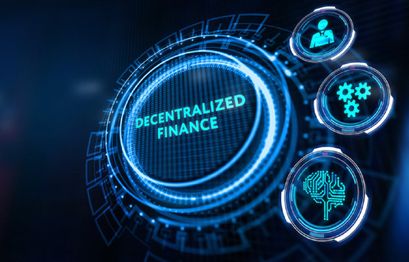The DeFi space has transformed the ways, in which people interact with the global economy and manage their finances. As DeFi apps and protocols become more popular and influential, users need an interface (UI) and experience (UX) that is both secure and innovative. Designers and developers are working on UIs and UXs that let people transact, access their funds, and interact in the DeFi ecosystem more easily.
A seamless transition
On that note, leading decentralized finance platform Summer.fi announced the launch of a migration tool that provides a seamless transition for Aave V3 protocol users. The tool allows Aave users to import their single-collateral / debt positions into the Summer.fi dApp, unlocking a range of advanced features without first paying off the position.
Summer.fi users may now equip their position with the following automations:
Auto-Buy
Auto-Sell
Trailing Stop-Loss
Stop-Loss
Unlocked Summer.fi dApps features include:
Effortless Risk Adjustments: LTV ratios can be adjusted in a single transaction, enabling swift collateral buying and selling and debt borrowing and payback.
One-Click Position Closure: Eliminates the need for sourcing liquidity during market fluctuations.
Stop-Loss Automation: Positions can be safeguarded with automated stop-loss tools, defending against sudden market downturns.
Enhanced User Interface: A cleaner, more informative UI offering details like liquidation price, PnL, and advanced transaction history.
Summer.fi streamlines position management by reducing the number of transactions needed and providing automated processes. The UI provides all relevant information and the tools necessary for actions such as adjusting risk, swapping tokens, and bridging capital to other chains.
Prospective users from Aave can identify eligible positions for migration by connecting their wallets to the Summer.fi UI. Eligible positions are displayed on the new portfolio page just as they will appear after migration.
How it works
To execute the migration, users deploy a smart account and set a token allowance on the aTokens in their wallet. Next, they initiate a migration, which involves a series of steps, including flash loans and collateral adjustments. The users then transfer tokens from their wallets to their smart accounts. The previous debt amount is then drawn against the collateral (aTokens) and used to repay the flash loan. This completes the position’s migration into Summer.fi.
Summer.fi’s migration tool signifies another important step towards optimizing DeFi management and user experience, helping to further establish the company as a leader in the DeFi sector.
Benefits of DeFi UI/UX design
DeFi UI/UX designers’ ability to offer users an intuitive and seamless experience is a key benefit. Designers and developers can improve user satisfaction and engagement with DeFi products by building customized interfaces that make it easier for users to interact with DeFi mobile app design.
What’s more, DeFi design can help users feel comfortable navigating the different user interface components and provides visual cues that make complex information easier to comprehend. Its benefits include higher efficiency, customer satisfaction, and security.
Increased efficiency
Optimal UX design introduces an efficient interface, helping users access the data needed as quickly as possible. This can enhance productivity and speed up transactions.
Improved customer satisfaction
Developers and designers who build user-friendly interfaces improve the user experience and satisfaction. This increases customer trust and loyalty to DeFi products.
Improved security
By creating safe interfaces, DeFi designers can minimize the risk of hacks by making it harder for cybercriminals to access and disrupt the system.
Advanced applications of DeFi
Some of DeFi’s more advanced applications include synthetic assets, yield farming, decentralized insurance, and maximizing returns by using aggregators. These innovations lend the DeFi ecosystem depth, offering more advanced financial services in a decentralized context and potentially bringing high returns.
Synthetic derivatives and assets
Synthetic DeFi assets and derivatives imitate real financial instruments, allowing people to practice different risk management and trading strategies. They can potentially provide broader market access, but ideally only to users who have a grasp of trading complexities.
Yield farming and liquidity mining
Yield farming is a step up from liquidity mining. It has been evolving over the past four years and entails earning rewards by transferring assets across platforms strategically. Liquidity mining, on the other hand, involves generating tokens to provide liquidity. Yield farming and liquidity mining offer high returns but with a substantial degree of risk.
DeFi aggregators
DeFi aggregators reduce risks and optimize returns across platforms, thereby streamlining the DeFi experience. They simplify complex systems but pose innate risks, such as smart contract vulnerabilities.
DeFi insurance
Finally, DeFi insurance protocols protect from some risks that are typical of DeFi platforms. However, they require careful consideration due to their complexity and associated risks.











